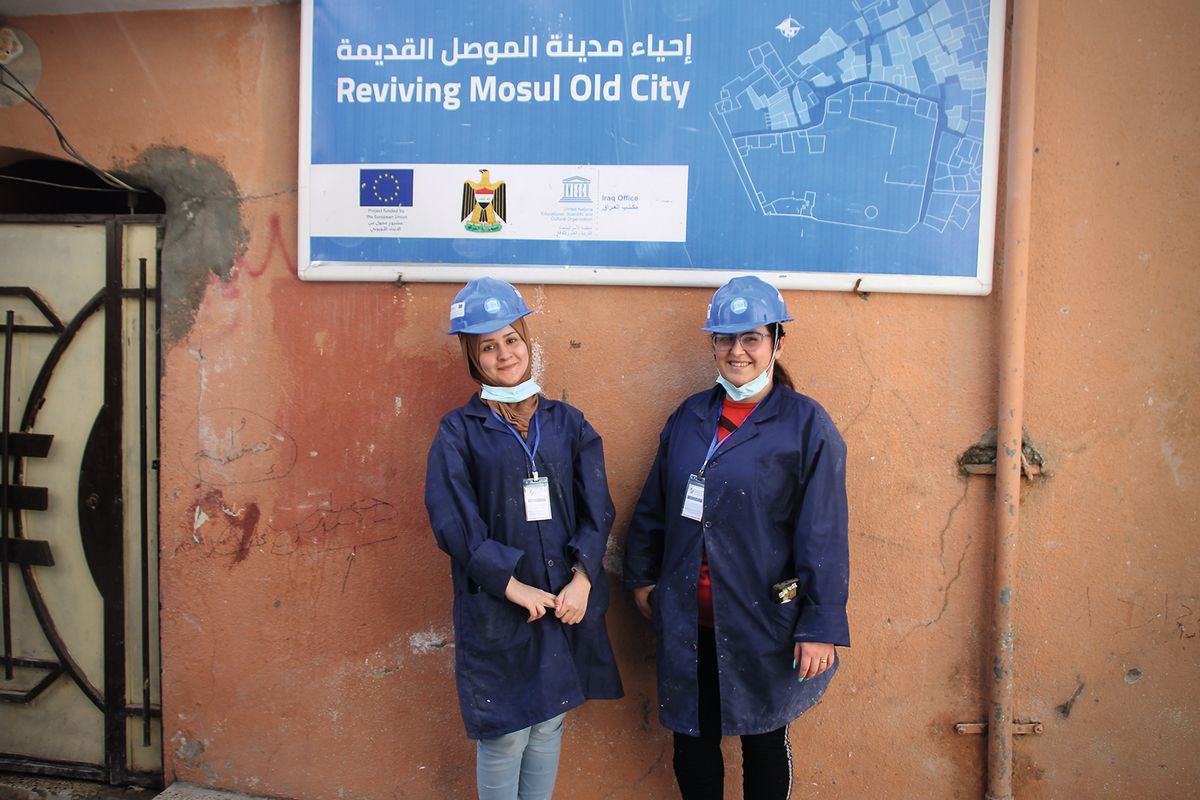For 25-year-old Noor Ammar and 26-year-old Aveen Imad, Unesco’s Revive the Spirit of Mosul project is something they can really get their hands on. The historic Iraqi city, which was unique for its diverse mix of Jewish, Christian and Muslim residents living side by side rather than in separate quarters, was severely damaged by aerial bombardment by the Iraqi army and its allies as they sought to flush out Isis in 2014-17. Unesco’s major EU-funded programme to restore Ottoman-era houses damaged during the liberation of Mosul is now bearing fruit, with the completion of 44 houses last month and another 75 due by the end of the year.
Ammar and Imad are among 119 local women and 670 men who are being trained in traditional stone masonry techniques using “Mosul marble”—a kind of gypsum alabaster native to the area—as part of a larger effort by Unesco to encourage community participation in heritage conservation. A separate training partnership in Mosul with the International Centre for the Study of the Preservation and Restoration of Cultural Property is focused on young architects and civil engineers. Elsewhere in Iraq, the EU Madad Fund involves Syrian refugees and displaced Iraqis in the rehabilitation of the Erbil Citadel, the ancient mound crowned by Ottoman buildings that is a Unesco World Heritage site.
Ammar and Imad have been learning the delicate art of colouring and repairing damaged alabaster. They began working on old city sites in February after four months of training. “This is not a usual profession for a woman,” says Ammar, who has a degree in history from the University of Mosul. Imad, a Christian from the nearby town of Bartella with a degree in business administration, concurs. “But after sitting at home for so many years during the occupation by Isis, we’re really glad to be working on such an important project that helps restore what was destroyed,” she says.

Mosul’s Jewish, Christian and Muslim residents lived side by side rather in separate quarters. Hadani Ditmars.
Four years after Unesco launched its ambitious Mosul reconstruction initiative, the pair say there is now a bigger job market for those trained in heritage conservation techniques than for university graduates. “There’s so much work,” Ammar says, both with NGOs and the Iraqi government, “now that the rebuilding has begun in earnest.”
Although the trainees currently receive only a stipend of $20 a day to cover lunch and transportation, they can earn upwards of $500 a month once they complete the Unesco programme. Conservation is “a sought-after skill”, Imad says, “and one that will guarantee future employment”.
Unesco’s vocational initiatives in Mosul are not only restoring monuments and infrastructure but also reviving dying art forms and traditional crafts. “Before I started this training, I never knew this kind of artisanal work still existed,” Imad says. “It was just stories I heard from my grandfather.” She hopes their efforts will also contribute to the growth of cultural tourism in Mosul, as Unesco continues to restore houses along two “heritage trails” linking them with landmarks like the Al-Nuri mosque.
As the old city houses come back to life, their spacious courtyards and cool alabaster basements have already attracted NGOs to work in Mosul, and many are renting properties from Moslawi families. Markets have reopened and the Al-Ekhlas school, a burnt-out shell only two years ago, is being rebuilt as a child-centred learning facility.
“I have a degree in history,” Ammar says, “but this is like working with living history. I’m proud to be part of rebuilding my city.”


